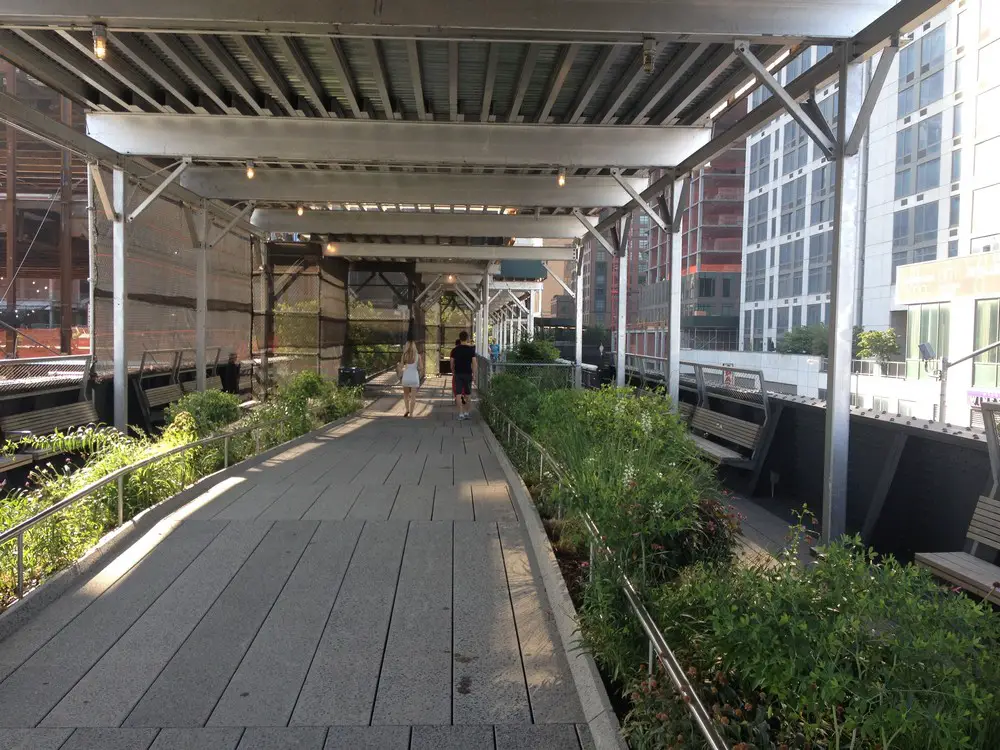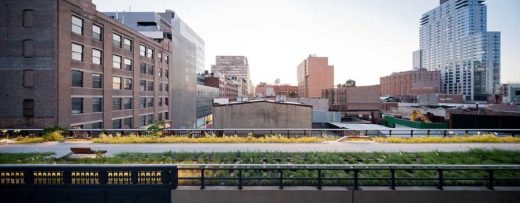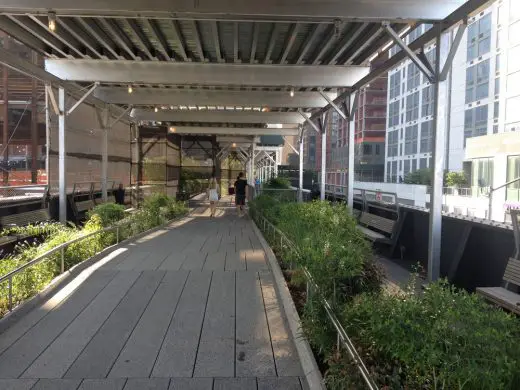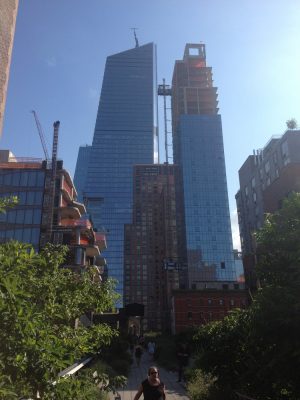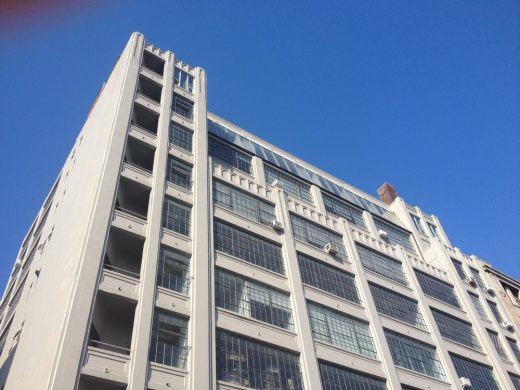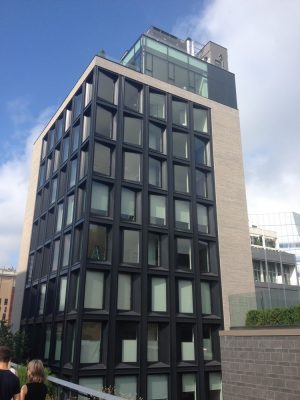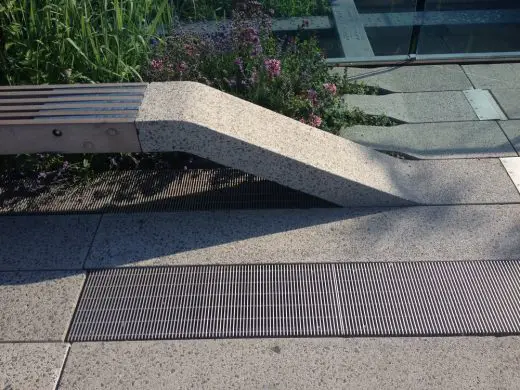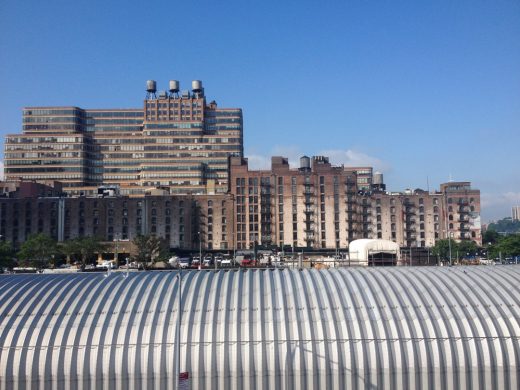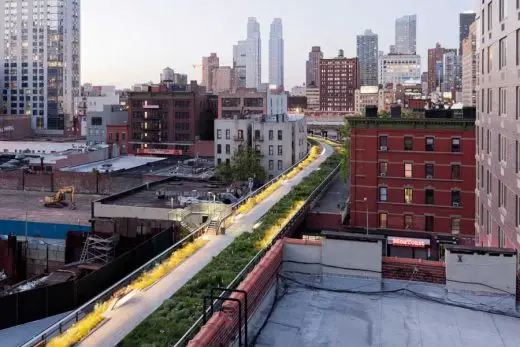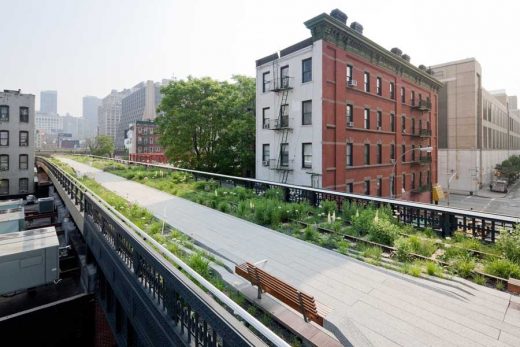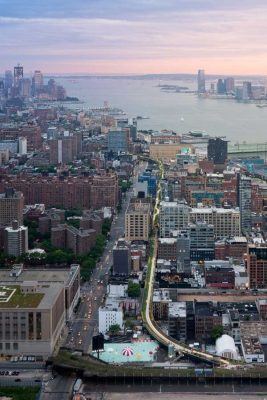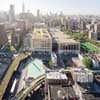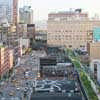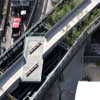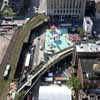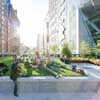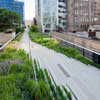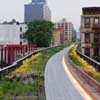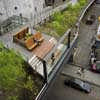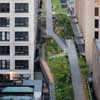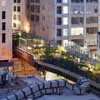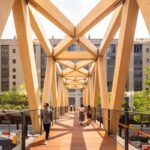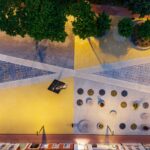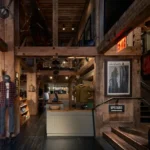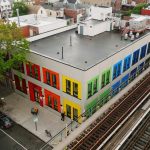High Line Park prize, New York rail walk, Manhattan urban design award news, NY public realm architect
High Line Park New York Section 2
Manhattan West Side Landscape Project: New Section, NYC, USA
Feb 21, 2018
High Line Wins Harvard Graduate School of Design’s 2017 Veronica Rudge Green Prize in Urban Design
$50,000 international prize awarded to Friends of the High Line, non-profit organization overseeing park’s upkeep and stewardship.
The Harvard Graduate School of Design (GSD) is pleased to announce that the 13th Veronica Rudge Green Prize in Urban Design has been awarded to the High Line in New York, designed collaboratively by James Corner Field Operations, Diller Scofidio + Renfro, and Piet Oudolf.
Jul 4, 2016
High Line Park New York
High Line Park New York Buildings + Landscape
Building images from 24 Jun – 2 Jul 2016 © Adrian Welch:
Jun 21, 2011
The High Line Park
MAYOR BLOOMBERG, SPEAKER QUINN AND FRIENDS OF THE HIGH LINE OPEN SECTION TWO OF THE HIGH LINE
Photos © Iwan Baan, 2011
Doubling the Length of the Park, New Section Spurs Development, Features New Public Art, Family Activities, and Community Events, and Connects Three Neighborhoods along Manhattan’s West Side
The Tiffany & Co. Foundation Launches Rail Yards Challenge with $10 Million in Pledges to Help Drive the Transformation of the Final Section of the High Line.
Mayor Michael R. Bloomberg, Council Speaker Christine C. Quinn and Friends of the High Line Co-Founders Joshua David and Robert Hammond today celebrated the opening of the second section of the High Line, the public park built 30 feet above the streets on a 1930s-era elevated freight rail line.
The opening of the second section doubles the length of the public park. After years of planning, design and construction, the High Line is now one mile long, running from Gansevoort Street to West 30th Street, connecting the Meatpacking District, West Chelsea, and Midtown West.
Mayor Bloomberg, Speaker Quinn and the Friends of the High Line were joined for the opening ceremony, which took place on the High Line at the 23rd Street lawn and seating steps, by Deputy Mayor for Economic Development Robert K. Steel; Congressman Jerrold Nadler; Manhattan Borough President Scott Stringer; Parks & Recreation Commissioner Adrian Benepe; City Planning Commissioner Amanda M. Burden; Economic Development Corporation President Seth W. Pinsky; New York City Landmarks Preservation Commission Chairman Robert B. Tierney; Michael J. Kowalski, Fernanda M. Kellogg and Anisa Kamadoli Costa of The Tiffany & Co. Foundation; long-time High Line supporters Barry Diller and Diane von Furstenberg, Lisa Maria and Philip A. Falcone and Donald Pels and Wendy Keys; Friends of the High Line Chairman John H. Alschuler; and Organized C.H.A.O.S., a youth step team from Brooklyn that performed at the ceremony.
“The High Line is already a world-renowned destination and New York City icon, and with the addition of Section Two, it makes for an even more enjoyable experience,” said Mayor Bloomberg. “The second half-mile adds different views and new features, making it distinct from the first section but no less remarkable. Just as the transformation of the High Line is ongoing – something that will be advanced further by the Tiffany & Co. Foundation Rail Yards Challenge – so too is the transformation of the area around it. Since work on the High Line began, we’ve seen the development of or planning for more than $2 billion in private investment, adding thousands of new residential units, thousands of new jobs, 1,000 new hotel rooms, and new restaurants, galleries and shops.”
“The success of the first section of the High Line has exceeded our expectations since it opened two years ago,” said Speaker Quinn. “Now New Yorkers and visitors from across the world will be able to enjoy the spectacular second section and experience more previously unexplored Manhattan vantage points all the way up to 30th Street. I want to thank Mayor Bloomberg, Friends of the High Line, and everyone who worked to see the High Line’s innovative, brilliant vision become a reality.”
Running between West 20th and West 30th Streets, the new section of the High Line is one-half mile long, doubling the length of the public park. New access points are located at West 23rd Street, West 26th Street, West 28th Street, and West 30th Street, supplementing the five existing access points at Gansevoort Street, West 14th Street, West 16th Street, and West 18th Street, and West 20th Street. All access points will be open daily during the public park’s summer operating hours, from 7:00 AM to 11:00 PM. The High Line is fully wheelchair-accessible, with a new elevator located at West 30th Street, and another located at West 23rd Street and scheduled to open by the end of June, supplementing two existing elevators at West 14th Street and West 16th Street.
“I’m thrilled to join in today’s announcement of the opening of Section Two of New York City’s terrific High Line,” said Congress Member Nadler. “Section Two builds upon a beautiful and unique open space while honoring and preserving the rail line that once enabled industrial development and growth on the West Side. I am proud to be a longtime supporter of the High Line, which we have not only saved from destruction but reinvented as a dynamic urban oasis for both residents and visitors to New York.”
“I am proud to stand here today with the Mayor and members of the community, as we cut the ribbon for Section Two of the High Line,” said Borough President Stringer. “There are few planning initiatives in New York which combine this project’s vision, imagination and sheer daring. Where there was once a decaying stretch of elevated freight tracks, there is now a beautiful park that draws visitors from around the world. The next phase will run from West 20th street to West 30th street, doubling the size of the park, and I am honored to be part of this venture. It’s a great day for New York.”
“The opening of section two is a great day for New Yorkers, visitors and the many people who have worked to transform the High Line from an abandoned railroad to a beautiful urban oasis,” said Assembly Member Richard Gottfried. “The extension of this unique public space to 30th Street means that more of the surrounding neighborhood will enjoy the positive economic impact that the High Line creates, and more New Yorkers and visitors will be able to enjoy the space.”
Traveling mid-block between 10th and 11th Avenues, the new section provides a new kind of urban experience, carrying visitors in close proximity to historic buildings and warehouses, and introducing unique views of the cityscape and architectural landmarks, including the Chrysler Building, the Empire State Building, and the New Yorker Hotel. Like the highly-acclaimed first section of the High Line, the design of the new section is inspired by the wild, self-seeded landscape that grew up naturally on the High Line when the trains stopped running in 1980.
The design retains the original railroad tracks from the industrial structure and restored steel elements including the High Line’s signature Art-Deco railings. An integrated system of concrete pathways, seating areas and special architectural features blend with naturalistic planting areas to create a singular landscape.
The High Line design is a collaboration between James Corner Field Operations (Project Lead), Diller Scofidio + Renfro, and planting designer Piet Oudolf, with support from consultants in lighting design, structural engineering, and many other disciplines. The design team was selected through a competition held by the City of New York and Friends of the High Line in 2004.
“Since the opening two years ago of section one, the High Line has emerged a must-visit destination for millions of New Yorkers and visitors,” said Parks & Recreation Commissioner Benepe. “With the debut of section two, New York City’s innovative park in the sky will extend all the way up to 30th Street, providing twice as much space for walking, relaxing, and enjoying unparalleled views of New York City and the historic and cutting edge architecture of West Chelsea.”
“With the opening of the second section of the High Line, pedestrians will be able to travel for 19 blocks, from neighborhood to neighborhood, without coming in contact with a single vehicle, while seeing the city from a floating vantage point,” said City Planning Commissioner Burden. “This magical, linear garden-in-the-sky has not only become the defining feature of the Meatpacking District and West Chelsea neighborhoods, it has shown how public investment in open space can spur economic development and design excellence. A decade ago, this remarkable urban artifact was threatened with imminent demolition. Today, thanks to the Bloomberg Administration’s commitment, City Planning’s zoning innovations and the Friends of the High Line’s advocacy, the High Line has become one of the most unique and memorable parks in the world.”
“In two very short years, the High Line has been instrumental in increasing the economic vitality of the historic and diverse communities through which it runs,” New York City Economic Development Corporation President Pinsky. “The opening of the second section of the Park will surely extend and deepen this impact. We have every reason to believe that the extended High Line will continue to be a magnet for businesses and residences alike, providing not just a welcome oasis in the middle of Manhattan, but generating positive returns for the taxpayers of the City.”
The Tiffany & Co. Foundation Rail Yards Challenge
The opening of the second section represents a major step forward in providing public access to the entire High Line. The remaining one-third of the High Line wraps around the Hudson Rail Yards, between West 30th and West 34th Streets. Still overgrown with wildflowers and grasses, the final section is owned by CSX Transportation, Inc. In 2010, the City completed the public land-use approval process to acquire this final section of the High Line, and is working with CSX and the underlying property owners on agreements to allow for public access to the High Line at the Rail Yards.
At the ribbon cutting ceremony, Mayor Bloomberg announced The Tiffany & Co. Foundation has pledged $5 million to launch of the Rail Yards Challenge, and long-time supporters of the High Line, Donald Pels and Wendy Keys have pledged an additional $5 million to double the challenge grant. Part of the Campaign for the High Line, the Rail Yards Challenge is a fundraising effort by Friends of the High Line to help drive the transformation of the final section of the High Line into public open space.
“The Tiffany & Co. Foundation works to preserve important landmarks and bring the beauty of the natural world to urban centers,” said Michael Kowalski, Chairman of the Board and Chief Executive Officer of Tiffany & Co. “We are proud today to announce a $5 million challenge grant to launch the Rail Yards Challenge to complete the final section of this New York City jewel.”
New Public Art, Family Activities and Free Public Events to Celebrate Opening Season
In celebration of the opening of the new section of the High Line, Friends of the High Line has commissioned four new public art installations, and organized more than 100 public events for the summer season, including dance performances, poetry readings, family arts workshops, nature scavenger hunts for kids, salsa dancing, film screenings, and more. All public art and public events are free or low-cost, and open to New Yorkers and visitors alike. Highlights include:
• The Lot at 30th Street. A new temporary public plaza under and adjacent to the High Line will be open daily for the summer of 2011, thanks to the property owners, Related Companies and Abington Properties. The Lot features a rotating series of food trucks; an outdoor bar operated by Colicchio & Sons; free events; and family-friendly activities. Rainbow City, a large-scale art installation by the Miami-based artist FriendsWithYou and presented by AOL, will inaugurate The Lot in its first month.
• Five New High Line Art Commissions. The new section of the High Line includes a sculpture by artist Sarah Sze, and a sound art installation by artist Julianne Swartz. Later this week, the Trisha Brown Dance Company will perform on rooftops along the High Line, complementing a new rooftop sculpture installation by artist Kim Beck. Last week, Friends of the High Line unveiled artist Joel Sternfeld’s photographic installation on a 25-by-75 billboard at West 18th Street, the first in a series of installations this summer.
• Step to the High Line Festival. Organized C.H.A.O.S. and other youth step teams from public schools across the five boroughs will turn the High Line into their stage during a week-long festival between June 13 and June 18. Step is a form of creative expression that celebrates the teamwork and power of youth through synchronized stomping, clapping, and calling.
“The High Line is many things – an historic artifact; a unique urban landscape; a social center for a changing neighborhood. But it is also an inspiring example of what can be accomplished when communities and their elected leaders work together for the common good,” said Friends of the High Line Co-Founder Robert Hammond. “Thank you to Mayor Bloomberg, Speaker Quinn, and all of the elected officials, neighbors, volunteers, and partners at civic organizations who rallied around us at the very beginning, when the idea was unpopular, and supporting it was truly visionary.”
Friends of the High Line began advocating for the High Line’s reuse as public open space in 1999. In 2002, the Bloomberg Administration endorsed the project. The High Line structure south of 30th Street was donated to the City of New York by CSX Transportation, Inc., in November, 2005. Construction began on the transformation into a public park in 2006.
Since the first section opened in June of 2009, the High Line’s popularity has exceeded expectations. Owned by the City of New York, the public park has welcomed more than four million people, comprised of nearly equal proportions of New Yorkers and out-of-town visitors, making it one of the most highly visited public park per acre in the city.
nder a license agreement with the City of New York, the non-profit conservancy Friends of the High Line raises private funding to support more than 90 percent of the public park’s annual budget for staffing and day-to-day maintenance and operations, as well as public programming and outreach to cultivate a community around the park. To date, Friends of the High Line has raised more than $50 million in private funding for its Campaign for the High Line, a fundraising effort supporting future capital construction and the endowment for park maintenance and operations.
Recognized as a significant contributor in the revitalization of Manhattan’s West Side, the High Line has become a defining feature in its neighborhood and a powerful catalyst for private investment. In 2005, the City rezoned the area around the High Line to encourage development while protecting the neighborhood character, existing art galleries, and the High Line.
The combination of the rezoning and the park has helped to create one of the fastest growing and most vibrant neighborhoods in New York City. From 2000 to 2010, the population within the rezoned area has grown more than 60 percent. Since 2006, after the rezoning was approved and construction of the High Line began, new building permits in the immediate vicinity of the High Line doubled and at least 29 major development projects have been initiated (19 completed, 10 underway).
Those 29 projects account for more than $2 billion in private investment, 12,000 jobs, 2,558 new residential units, 1,000 hotel rooms, more than 423,000 square feet of new office space and 85,000 square feet of new art gallery space. In May, construction began on a new downtown home for the Whitney Museum of American Art, which will serve as a major cultural anchor at the southern end of the High Line when it opens in 2015.
The total cost for the design and construction of the High Line is $153 million. The cost of the section of the public park that opened today is $66.8 million. Funding for the entire project includes $112.2 million from the City, $20.7 million from the federal government, and $700,000 from the State. Remaining funds were raised by Friends of the High Line or paid by real estate developers pursuant to the Special West Chelsea Zoning District.
High Line Section 2
Design Features
Chelsea Thicket
As visitors move north from the Chelsea Grasslands’ prairie-like landscape, a dense planting of flowering shrubs and small trees indicates the beginning of a new section of the park, between West 20th and West 22nd Streets. In the Chelsea Thicket, species like winterberry, redbud, and large American hollies provide year-round textural and color variation. An under-planting of low grasses, sedges, and shade-tolerant perennials further emphasizes the transition from grassland to thicket.
We call this area the Thicket when space constraints require the official name to be shortened.
23rd Street Lawn and Seating Steps
The High Line opens to a wider area between West 22nd and West 23rd Streets, where an extra pair of rail tracks once served the loading docks of adjacent warehouses. The extra width in this area was used to create a gathering space, with Seating Steps made of reclaimed teak anchoring the southern end of a 4,900-square-foot lawn. At its northern end, the Lawn “peels up,” lifting visitors several feet into the air and offering views of Brooklyn to the east, and the Hudson River and New Jersey to the west.
We call these areas the Lawn and Seating Steps when space constraints require the official names to be shortened.
Philip A. and Lisa Maria Falcone Flyover
Between West 25th and West 26th Streets, adjacent buildings create a microclimate that once cultivated a dense grove of tall shrubs and trees. Now, a metal walkway rises eight feet above the High Line, allowing groundcover plants to blanket the undulating terrain below, and carrying visitors upward, into a canopy of sumac and magnolia trees. At various points, overlooks branch off the walkway, creating opportunities to pause and enjoy views of the plantings below and the city beyond.
We call this area the Falcone Flyover when space constraints require the official names to be shortened.
26th Street Viewing Spur
Hovering above the historic rail on the east side of the High Line at West 26th Street, the Viewing Spur’s frame is meant to recall the billboards that were once attached to the High Line. Now the frame enhances, rather than blocks, views of the city. Tall shrubs and trees flank the Viewing Spur’s frame, while a platform with wood benches invites visitors to sit and enjoy views of 10th Avenue and Chelsea.
We call this area the Viewing Spur when space constraints require the official names to be shortened.
Wildflower Field
Between West 26th and West 29th Streets, the landscape of the Wildflower Field is dominated by hardy, drought-resistance grasses and wildflowers, and features a mix of species that ensures variation in blooms throughout the growing season. The simplicity of the straight walkway, running alongside the wildflowers interspersed between the original railroad tracks, allows visitors to appreciate the green axis of the High Line, as it moves through the city.
Radial Bench
At West 29th Street, the High Line begins a long, gentle curve toward the Hudson River, signifying a transition to the West Side Rail Yards. The High Line’s pathway echoes the curve, and a long bank of wooden benches sweep westward along the edge of the pathway. Planting beds behinds and in front of the benches line the curve with greenery.
30th Street Cut-Out
Near the northern terminus of Section 2, the pathway curves west toward the Hudson River, and slowly rises above an area where the concrete decking has been removed, showcasing the strength of the High Line’s steel frame. The pathway leads to a viewing platform that hovers above the Cut-Out, allowing visitors to peer down through the grating and grid of steel beams and girders to the traffic passing below on West 30th Street.
We call this area the Cut-Out when space constraints require the official names to be shortened.
Jun 11, 2010
High Line Park in Manhattan
Engineering Firm Buro Happold North America Wins Project of the Year for New York’s High Line Park
The New York Chapter of the New York State Society of Professional Engineers presents annual awards for significant and innovative contributions to the field. The Project of the Year Award acknowledges a creative work that has been designed to improve a community’s surroundings.
New York, NY – The New York Chapter of the New York State Society of Professional Engineers (NYSSPE) recently honored Buro Happold with the 2010 Project of the Year Award. Buro Happold was recognized for its work on the first section of the High Line – Manhattan’s abandoned elevated railroad that was transformed into an urban park. Buro Happold provided structural engineering in support of the new landscape architecture and architecture components and mechanical, electrical and plumbing engineering services.
“The New York Chapter of NYSSPE is pleased to honor the High Line and Buro Happold with the Project of the Year award. The goal of the society is to recognize and promote the value that professional engineers bring to our daily lives. The unique challenges that were met and the success of the High Line exemplify the contributions of engineering firms such as Buro Happold and professional engineers,” said Erich Arcement, PE, PTOE, President of the New York Chapter, NYSSPE.
“Buro Happold is proud of this acknowledgement of our contribution to the success of the High Line. Along with other members of the team, we are proud to have creatively transformed the existing city infrastructure into a public landscape and a New York City icon for years to come,” said Craig Schwitter, Managing Director, Buro Happold North America.
Buro Happold faced challenges of incorporating the existing structure with the new infrastructure, at 30 feet above the ground. A number of the existing girders had to be removed to make room for staircases from the former railroad down to the street. Buro Happold engineers created a new drainage system to serve the new elevated park. A new mechanical system was also designed with an extensive electrical system for lighting and security.
The 20th-century railroad was slated for destruction before The Friends of the High Line (FHL) championed the idea of converting it into an elevated park. Spanning between Gansevoort Street and 20th Street, the first section has over 15,000 visitors a day during the summer.
The design team also included landscape architects James Corner Field Operations and architects Diller Scofidio & Renfro. Robert Silman Associates provided historic preservation services for the existing steelwork. GRB Services, Langan Engineering and Philip Habib & Associates were also part of the team.
About Buro Happold
Founded by Ted Happold and a team of seven colleagues in Bath, UK, in 1976, Buro Happold is one of the world’s premier multidisciplinary engineering consultancies. Buro Happold presently operates out of six North American offices (Boston, Chicago, Los Angeles, New York, San Francisco, and Toronto) and 27 offices worldwide.
The firm inventively integrates sound engineering principles and advances sustainable design in all of its projects. Buro Happold’s engineers work as members of design teams with architects and other professionals, providing either specific or comprehensive engineering services for complete developments, buildings, and their infrastructures. The firm’s broad and effective approach assists teams during every stage of design, from the important early stages through final implementation and subsequent operation and maintenance.
High Line Park New York Award information received 100610
Recent related post on e-architect:
June 21, 2023
High Line – Moynihan Connector, Manhattan, New York City, USA
Architects: Skidmore Owings & Merrill – SOM
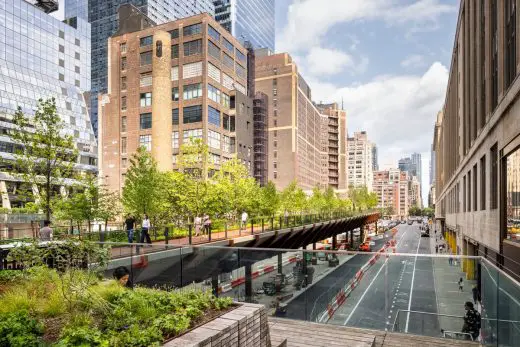
photo : Andrew Frasz / courtesy of the High Line
High Line – Moynihan Connector
Location: West Chelsea, New York City, USA
New York City Architecture
Contemporary New York Buildings
Manhattan Architecture Designs – chronological list
New York City Architecture Tours by e-architect
New York Architecture – Selection
Empire State Building
Shreve, Lamb & Harmon Architects
Empire State Building
Rockefeller Center
Raymond Hood, Architect
Rockefeller Center New York
Camden Highline
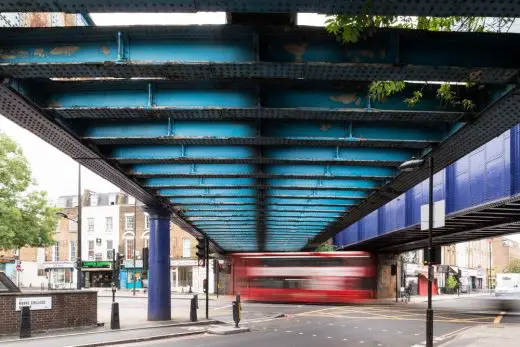
photo : FRENCH+TYE
Camden Highline Competition – 2020
Guggenheim Museum
Frank Llloyd Wright, Architect
Guggenheim Museum NYC
Comments / photos for the High Line Park Manhattan Expansion page welcome
Website: www.thehighline.org

